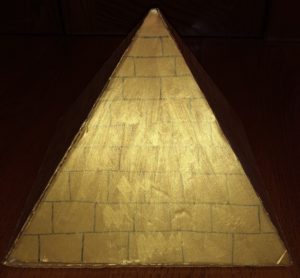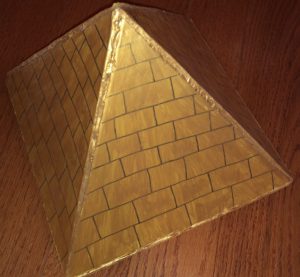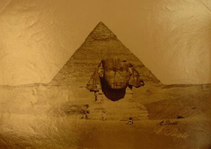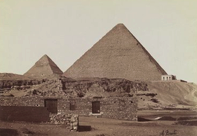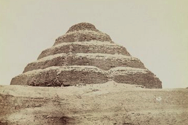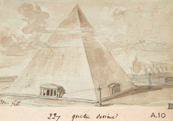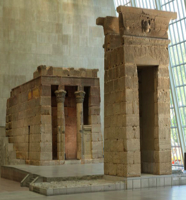Cassandra Moseley
Professor Shaw
Art 1010
Humanism became prominent in the Ancient worlds of Greece and Rome, which are very intertwined with one another. Humanism revolves around the Beauty of the Human form and its Essence. Humanism during the Greek and Roman era of artwork put humans at the center of everything; the human experience is at the center of all events in contrast to previous societies that put God at the center of everything. As time proceeds we begin to see an evolution of Humanism in which different elements begin to enhance this concept, most of which is seen through statues of men and women that were either prominent figures or part of mythology. Though, the evolution of Humanism can be seen through the different works of art that depict children during these Ancient times. Today, I will take you on a museum tour to explore the theme of children being depicted in artwork and their clear demonstration of the evolution of Humanism throughout the Ancient Worlds. We will begin the tour starting with Ancient Egypt.
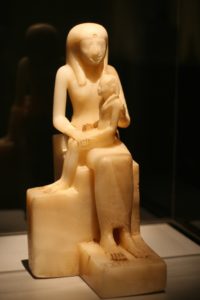
This first image is Statue of Queen Ankhnes-myre II and her son, Pepy II, ca 2288-2224 or 2194 B.C.E., at the Brooklyn Museum. I am beginning this tour with this piece of artwork from the Old Kingdom of Ancient Egypt. During this time, artwork still revolved around the different Egyptian Gods meaning that humans were not considered to be at the center of the universe at this point. I chose to begin with this particular piece because it is one of the first, and few times we see a child in artwork. In beginning the tour with this piece we can see that the child does not phenotypically display accurate representations of what children look/looked like. The child does not have any characteristic child features that would instantaneously make us assume that this was in fact a child. In the way the child was made to look in this piece, he just looks like a smaller version of an adult, again because he lacks resemblance to children. This piece of work is good to keep in mind as we explore the next few pieces.

The next image I wish to bring your attention to is Hermes with the Infant Dionysus, 4th century by Praxiteles at the Archaeological Museum of Olympia. Here we move into Ancient Greece where we see the development of Humanism. During this time we begin to see more art revolved around humans and the human body. I felt as though this piece was important to show on the tour because we can clearly see the evolution of Humanism in Hermes, but we can also begin to see the development through infant Dionysus. Here we begin to see physical features of children that are similar to what we see in our everyday lives. Dionysus has the round and full face that infants often have as well as a smaller and pudgier body. I believe that this clearly shows development of Humanism in children because if the name of the piece was not given, a viewer could still identify that a child is being represented.

Next, we will look at Marble grave stele with a family group, ca. 360 B.C., Late Classical at the Metropolitan Museum. I brought you to this piece in particular so that we could observe a few details in this piece. In this marble grave stele we can take note of the two women and man, and the chid holding hands with who we could assume is her mother. I chose to show this piece because just like the previous sculpture, we can see a clear representation of a child, this time a little girl. At this point we can see through examining the child that the depiction of Humanism has begun to evolve. One observation we can take into account is the use of size to show that she is in fact representing a young girl. The mother’s hand that is holding the young girl’s hand is noticeably larger than the young girl’s. I would like to point this out because it looks slightly exaggerated, but it can be assumed this was done to show that this a very young child, perhaps between the ages of 5-8. Then, when we take a look at the young girl’s face it is hard to decipher her age range, and if the body were to be gone such as the case with the woman to the left of her, one could argue that it would be difficult to tell that she was a little girl. The size of the head could signify that she was supposed to be a young girl, but the facial features could make one weary. This is why I chose this piece, size is used to clearly depict a child in this family, but the facial features are similar to those of pieces of artwork depicting women. The child has softer features to show a child, but the overall face is still similar to a woman’s. This piece shows evolution in Humanism through the young girl, but there is still an ongoing use of adult-like features on young children at this point in time.

One other piece we will be observing and examining briefly is Bronze statue of Eros sleeping, 3rd-2nd century B.C., Hellenistic Period at the Metropolitan Museum. Even though this piece is representing mythology, we can see obvious evolution of Humanism through Eros being depicted as a child. Brief background for the Hellenistic Period that we are entering is that during Alexander the Great’s reign we see a change and evolution in Humanism. During this time, we begin to see more works of art showcasing different subject matter as well as accurate characterizations of age. On that note, we can really appreciate the details of this piece, which is why I brought you to this piece next. In this piece, even though it is a representation of Eros, we have a child as the main subject matter. In this sculpture we can clearly see many different physical features that are being used to show that this is a child, instead of the reliance on size. Here we see the use of softer lines for Eros’ body in order to give the body a softer and more plush appearance, physical features we expect to see in a child in real life. We even see Eros with chubby feet, again another physical feature that is associated with very young children. Now if we take a look at Eros’ face, the use of soft lines and grooves is used to, again, give the face a softer and rounder look. Also, the tousled curls that Eros has gives him another young boyish feature. I chose this piece because it coincides perfectly with my theme of the evolution of humanism depicted through children. Evolution of Humanism was evident during the Hellenistic Age especially with their true and accurate depictions of children. Here we see more focus on physical features to represent specific age groups instead of the use of size.

The last picture I will bring your attention to is Bronze statue of a camillus (acolyte), Roman A.D. 14-54, Early Imperial, Julio Claudian at the Metropolitan Museum. As time went on the Romans also began to use more children as subject matter, and there was a focus on physical features depicting accurate age. When taking a look back to the previous pieces and now to this one, we can really begin to appreciate the development of Humanism as time went on. Just like the previous piece, in this Roman sculpture we can appreciate the accurate child-like physical features of this young boy. Here, soft lines and grooves are used for his physical features to once again show that he is a young boy. Although his hair isn’t tousled like Eros, it is cropped, but boyish curls are still depicted giving this child a more youthful look. When looking at his face, we see another depiction of a round and soft face to show the youthfulness of this boy, something we associate with children. We also see a slight smile and the softness of the apples of his cheeks, a physical feature that is prominent amongst children. I wanted to point out this physical feature on the boy because it is one of the most child-like physical features to the point where we have a saying “…so cute I could pinch your cheeks”, which is most often said to children; and the Romans captured this so perfectly. We also see his body as having the correct ratios and proportions to that of a real human child. I believe that this was a good sculpture to close on because we can see through this statue that as civilizations evolved we begin to see the evolution in their detailing to accurately portray the human world. This piece helps to further the idea that children accurately display the development of Humanism throughout the Ancient worlds that we have explored and previous learned about in detail.
I would like to end this tour with some final thoughts about the explored theme and pieces of art works that we examined. In the beginning I proposed to you the idea that while men and women are mostly used to show the development of Humanism throughout the Ancient Worlds, children in artworks accurately show the evolution and development of Humanism. Throughout the different pieces that I showed we begin to see artistic development along with civilization development. In beginning with the piece Statue of Queen Ankhnes-myre II and her son, Pepy II, and then examining the other pieces we can truly appreciate the development of artist’s attention to physical features when it comes to the depiction of children; size is no longer the main detail used to depict children. We began to see the use of softer lines and grooves and accurate proportions in order to accurately represent children in the art world, and their classic physical features that make a viewer instantly assume that a child is being shown. The children in artworks perfectly show the development and evolution of Humanism in the art world.
Works Cited
“Bronze Statue of Eros Sleeping.” Khan Academy, Khan Academy, www.khanacademy.org/humanities/ancient-art-civilizations/greek-art/hellenistic/v/enamored.
Hemingway, Colette, and Seán Hemingway. “The Art of Classical Greece (ca. 480–323 B.C.).” In Heilbrunn Timeline of Art History. New York: The Metropolitan Museum of Art, 2000–. http://www.metmuseum.org/toah/hd/tacg/hd_tacg.htm (January 2008)
Hemingway, Colette, and Seán Hemingway. “Art of the Hellenistic Age and the Hellenistic Tradition.” In Heilbrunn Timeline of Art History. New York: The Metropolitan Museum of Art, 2000–. http://www.metmuseum.org/toah/hd/haht/hd_haht.htm (April 2007)
Nichols, Marden. “Contexts for the Display of Statues in Classical Antiquity.” In Heilbrunn Timeline of Art History. New York: The Metropolitan Museum of Art, 2000–. http://www.metmuseum.org/toah/hd/disp/hd_disp.htm (April 2010)









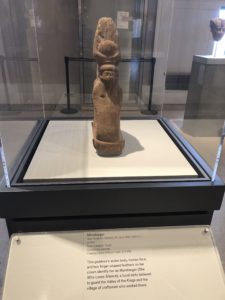
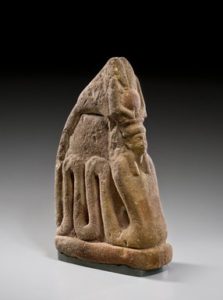
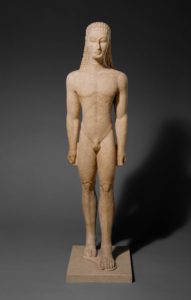


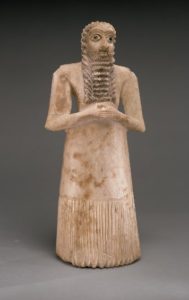 Artist: N/A
Title: Standing Male Worshiper
Date: 2900–2600 B.C.
Museum: The Metropolitan Museum of Art
Artist: N/A
Title: Standing Male Worshiper
Date: 2900–2600 B.C.
Museum: The Metropolitan Museum of Art
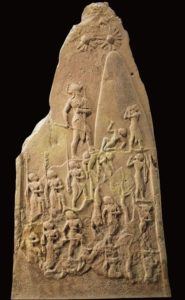 Artist: N/A
Title: Stele of Naramsin
Date: 2245 BCE
Museum: Louvre Museum (Paris)
Artist: N/A
Title: Stele of Naramsin
Date: 2245 BCE
Museum: Louvre Museum (Paris)
 Artist: N/A
Title: Stele of Hammurabi
Date: 1780 BCE
Museum: Louvre Museum (Paris)
Artist: N/A
Title: Stele of Hammurabi
Date: 1780 BCE
Museum: Louvre Museum (Paris)
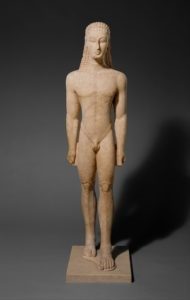 Artist: N/A
Title: Kouros
Date: 600 BCE
Museum: The Metropolitan Museum of Art
Artist: N/A
Title: Kouros
Date: 600 BCE
Museum: The Metropolitan Museum of Art
 Artist: Polykleitos
Title: Doryphoros (Roman copy)
Date: 450-440 BCE
Museum: Museo Archaeologico Nazionale (Naples)
Artist: Polykleitos
Title: Doryphoros (Roman copy)
Date: 450-440 BCE
Museum: Museo Archaeologico Nazionale (Naples)
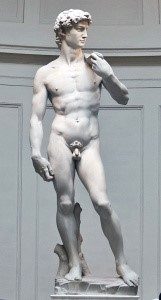 Artist: Michelangelo
Title: David
Date: 1504
Museum: N/A
Artist: Michelangelo
Title: David
Date: 1504
Museum: N/A
 Artist: Raphael
Title: School of Athens
Date: 1509
Museum: N/A
Artist: Raphael
Title: School of Athens
Date: 1509
Museum: N/A

